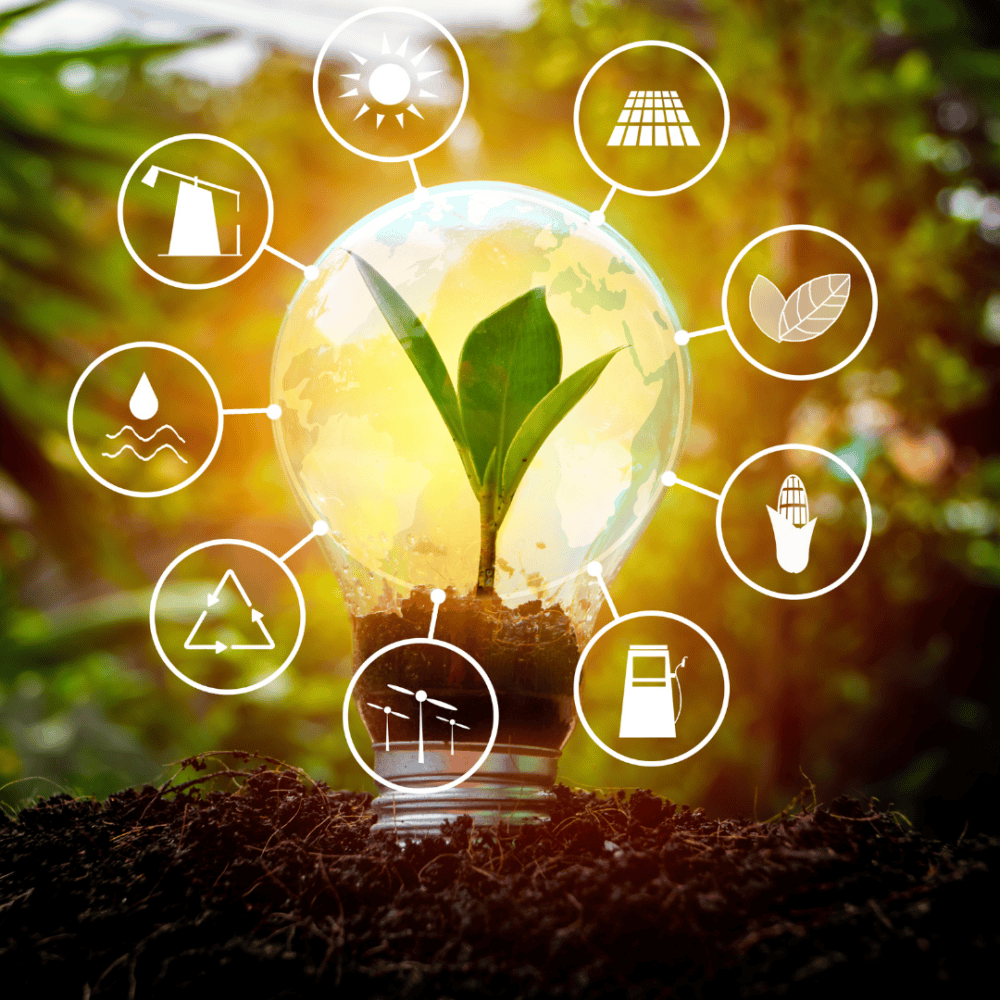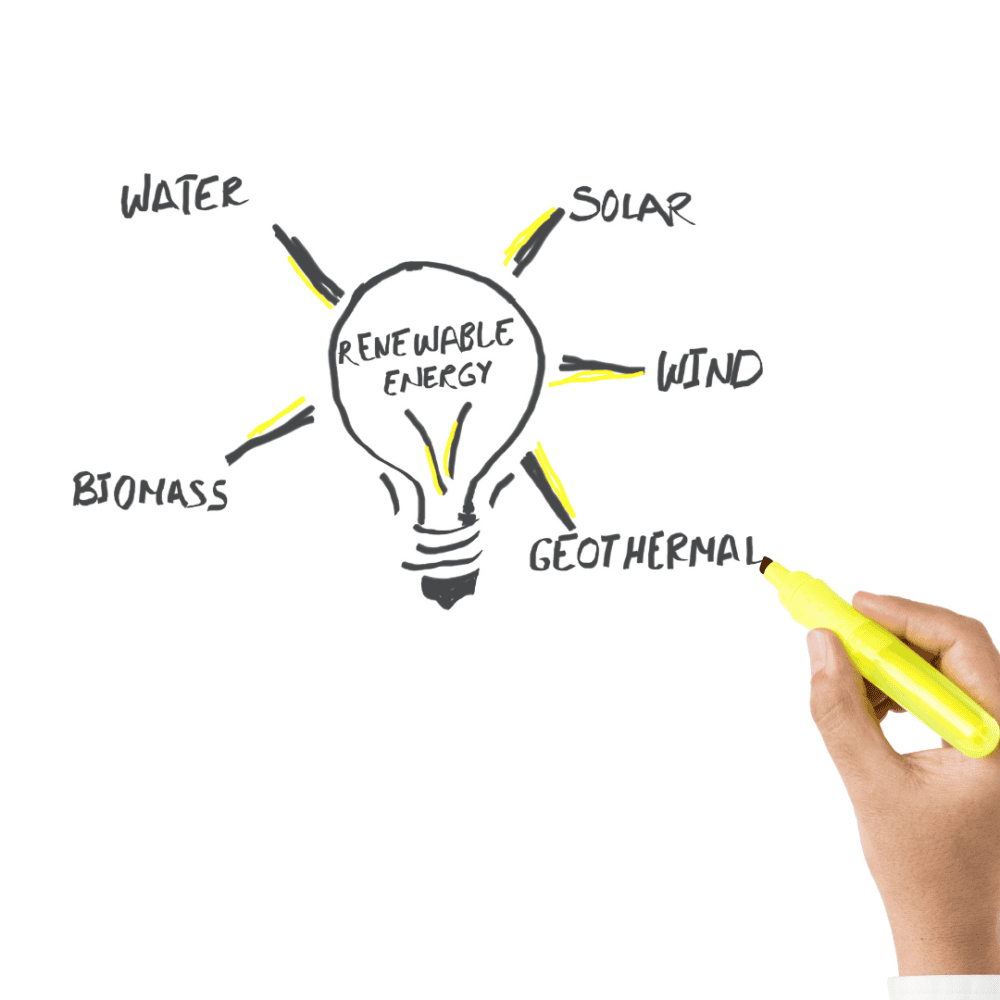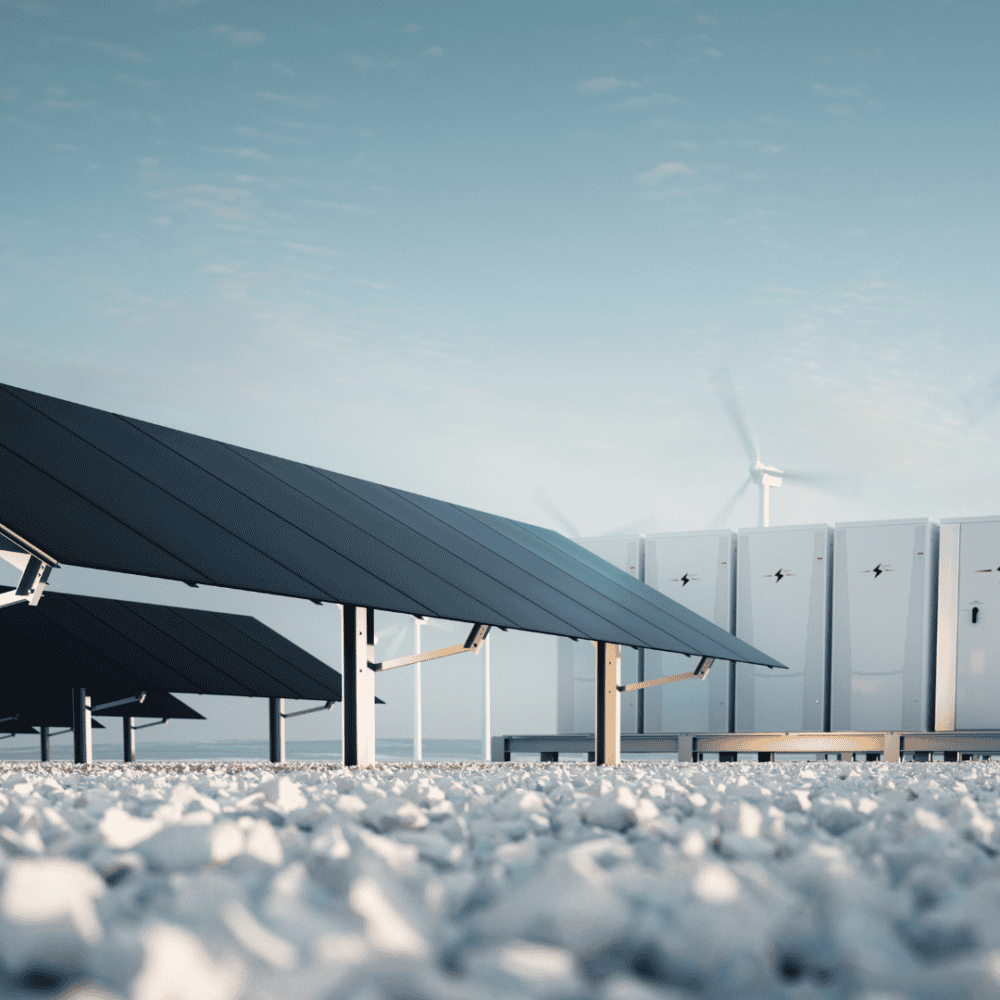
What are the benefits of renewable energy?
Table of Contents
Renewable energy is a fast-growing sector that has become increasingly important in recent years. With the rise of global warming and climate change, the need for clean energy sources has become more pressing than ever before. Renewable energy offers an alternative to traditional fossil fuels that are responsible for greenhouse gas emissions.
Renewable energy includes solar, wind, geothermal, hydropower and biomass power generation. These forms of energy are sustainable because they rely on natural resources that are replenished over time. By using renewable energy sources instead of non-renewable fossil fuels, such as coal or oil, we can reduce our carbon footprint and slow down the negative effects of climate change.
The shift is gaining momentum across the globe as governments, individuals, and corporations recognize the need for sustainable solutions to meet our growing energy needs. This article will explore the benefits of renewable energy sources and highlight some of the challenges facing this growing industry.
Explaining the concept of renewable energy

Renewable energy is a term used to describe energy that comes from sources that are replenished naturally and can be replenished quickly. This means that renewable energy sources will never run out, unlike finite resources like coal and oil. Examples of renewable energy include solar power, wind power, hydroelectric power, geothermal power, and biomass.
The concept of renewable energy is gaining popularity as people become more aware of the impact non-renewable resources have on the environment. The use of non-renewable resources has been linked to climate change, pollution, deforestation, and other environmental problems. By using renewable energy sources instead of non-renewable ones, we can help reduce our carbon footprint and preserve natural resources for future generations.
Renewable energy is not only beneficial for the environment but also for individuals and businesses.
Types of renewable energy: Solar, Wind, Hydro, Geothermal, Bioenergy

SOLAR: Solar energy is one of the most rapidly growing renewable energy sources in the world. It has become increasingly popular due to its many benefits, including being environmentally friendly and cost-effective. Solar power is generated by converting sunlight into electricity using solar panels.
Energy sources like solar power have significant advantages over electricity generation and traditional fossil fuels such as coal and oil. One of the most important advantages is that they do not produce harmful emissions, which can have a devastating impact on our environment. Additionally, renewable energy sources are becoming increasingly cost-effective as technology improves and economies of scale are achieved.
The potential for solar farms is enormous, and these renewable energy projects continue to grow every year. Many countries around the world are investing heavily in solar technology, with some aiming to entirely replace traditional fossil fuel-based systems with renewables within a few decades.
WIND: Wind energy has the potential to play a significant role in meeting our energy needs in the future. Wind turbines work by harnessing the kinetic energy of wind and converting it into electricity through the use of blades that spin a generator. This clean, sustainable form of energy is becoming an increasingly popular choice for both residential and commercial applications.
One of the biggest advantages of wind power is its ability to reduce greenhouse gas emissions. Unlike traditional sources of electricity like coal and gas, wind energy storage power does not produce any harmful pollutants or carbon dioxide. In addition, the cost of producing wind energy has decreased significantly in recent years due to technological advancements and increased investment in renewable energy infrastructure. As a result, many countries around the world are now investing heavily in offshore wind farms as part of their long-term strategy.
HYDROELECTRIC: Hydroelectric power is a form of renewable energy that harnesses the power of moving wave energy to generate electricity. This type of energy is considered clean, reliable, and sustainable because it does not produce harmful emissions or pollutants. Hydroelectric large dams are generally built on large rivers and can provide a significant amount of electricity for homes, businesses, and industries.
One of the advantages of hydroelectric energy is its ability to store power in the form of water. When demand for electricity is low, excess bodies of tidal energy water can be stored behind the dam until it is needed again. Additionally, hydroelectric power plants are highly efficient and can convert up to 90% of the available energy into usable electricity. This makes it one of the most sustainable way and cost-effective sources of renewable energy available today.
Despite its many advantages, hydroelectric power also has some drawbacks. Building dams can have negative environmental impacts on local ecosystems and wildlife habitats.
GEOTHERMAL: Geothermal energy is a type of renewable energy that utilizes the heat generated from the Earth’s core to generate electricity. This form of clean energy has been gaining popularity in recent years due to its sustainability and low carbon footprint. Unlike traditional fossil fuels, geothermal energy does not produce harmful emissions or pollutants, making it a highly desirable option for meeting our growing energy needs.
One of the significant advantages of geothermal heat pumps energy is that it is available 24/7, unlike solar or wind power, which is dependent on weather conditions. Geothermal plants can operate all year round, providing a stable and reliable power supply without any interruptions. Another benefit of this renewable source is its longevity; once a geothermal plant is built, it can operate for decades without needing any major repairs or replacements.
Despite its potential benefits, geothermal energy still faces some challenges, such as high initial investment costs and limited access to suitable sites.
BIOENERGY: Bioenergy is a renewable energy source that refers to any organic material that can be used as fuel, such as food waste, wood chips, sawdust, and agricultural waste. Bioenergy is often used to produce electricity, heat homes and buildings, and even power vehicles. As a result of its versatility and sustainability, it has emerged as an essential component of the global push towards cleaner sources of energy.
One of the key advantages of bioenergy is its ability to reduce greenhouse gas emissions. Unlike fossil fuels like coal and oil which release huge amounts of carbon into the atmosphere when burned, biomass produces significantly less CO2. Moreover, since most forms of bioenergy come from plants, biomass feedstocks or other renewable sources that can be replanted or grown again in a relatively short period of time, they offer a more sustainable alternative to the finite resources found underground.
Advantages of renewable energy: Clean, sustainable, cost-effective
Renewable energy sources have become increasingly popular worldwide, thanks to their numerous advantages over traditional fossil fuels. One of the biggest benefits is that it’s much cleaner and environmentally friendly. Unlike coal or gas-powered plants, renewable energy sources like wind turbines and solar panels don’t produce greenhouse gases or other pollutants that contribute to climate change.
Moreover, renewable energy is sustainable because its sources are infinite and inexhaustible. For instance, sunlight is an unlimited resource that can be harnessed to generate electricity using solar panels. The same applies to wind power and hydropower as well since both are renewable resources with no depletion rate. Renewable energy also helps reduce dependence on foreign oil supplies, which can be a major issue for countries reliant on imported oil also its cost-effectiveness.
Challenges of renewable energy: Intermittency, storage, infrastructure

There are still some challenges that come with solar, wind and hydropower form of energy production. One major issue is intermittency – renewable energies are dependent on weather conditions and may not always generate power when needed. This can lead to fluctuations in supply and demand, making it difficult for grids to maintain stable voltage levels.
Another challenge of renewable energy is storage. Unlike traditional fossil fuel plants that can store large quantities of fuel on-site, renewable sources require specialized batteries or other forms of storage technology to capture excess energy for later use. These systems can be expensive and often have limited capacity, which means they may not be able to meet the demands of larger communities or industrial facilities. Additionally, infrastructure remains a key challenge as many regions lack the necessary clean energy transition, transmission lines or network capacity to support large-scale renewable developments.
Government policies and support for renewable energy
One of the primary ways that local governments can support renewable energy is through financial incentives such as tax credits, subsidies, grants, or loans. These incentives can help businesses and homeowners invest in renewable energy technologies like solar panels or wind turbines without breaking their bank accounts. Additionally, it encourages innovation in the sector by making it economically viable for energy sector companies to experiment with new forms of technology.
Renewable energy and its great potential have been gaining attention from various governments around the world due to the increasing concern about climate change and its effects on the environment. The shift is becoming more necessary than ever, given that fossil fuel sources are depleting and releasing greenhouse gases into the atmosphere. Governments have a responsibility to provide policies and support for renewable energy in order to reduce their carbon footprint and meet their emission targets.
Future outlook for renewable energy: Growth and innovation

Renewable energy, also known as clean energy, has seen remarkable growth and innovation in recent years. The use of different types of renewable energy sources such as solar, wind, hydroelectricity, geothermal and biomass have rapidly gained popularity due to their capacity to reduce climate change impacts while providing a reliable source of power for homes and businesses.
The future outlook for renewable energy, also known as clean energy, is positive as it has seen remarkable growth and innovation in recent years, also increasing interest from governments, investors and consumers. In 2019 alone, global investment in renewable energy reached $282 billion which is a clear indication that the industry is thriving. Governments are introducing policies aimed at reducing carbon emissions by promoting the use of renewable energy sources through incentives such as feed-in-tariffs (FITs), tax credits or subsidies for research and development. Consumers are becoming more aware of the benefits of green technology and choosing to invest in clean energy options such as rooftop solar panels or electric vehicles.
Conclusion: Urging individuals and businesses to embrace clean energy
it is crucial for individuals and businesses to embrace clean, renewable energy in order to reduce our carbon footprint and protect the environment. The benefits of renewable energy far outweigh those of traditional fossil fuels, including lower costs and improved air quality. By investing in solar panels or wind turbines, businesses can not only save money on energy bills but also attract environmentally conscious customers. Individuals can take small steps, such as using LED light bulbs or buying energy-efficient appliances to reduce their reliance on non-renewable resources. It is time for us all to recognize the importance of clean energy and take action towards a sustainable future. Let’s make the switch today!



